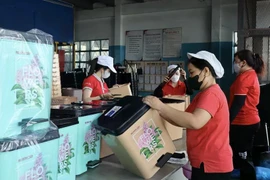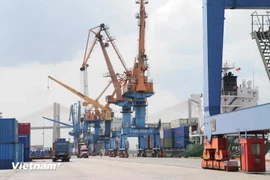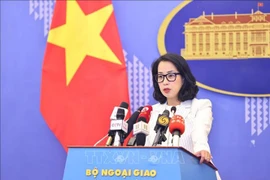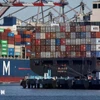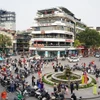Hanoi (VNS/VNA) - The US dollar supply and the foreign exchange rate in the domestic market might be under pressure due to the US’s 46% reciprocal tax imposition on Vietnam’s export goods, but the State Bank of Vietnam (SBV) is still able to control it thanks to monetary policy tools, experts have believed.
Pham Luu Hung, Director of the Saigon Securities Company (SSI)’s research division, expects that the pressure to adjust the exchange rate in the short term may not be too strong as the Vietnamese dong had been depreciating against the US dollar for a long time, creating a certain buffer.
“The exchange rate is still a factor that needs to be closely monitored, but the SBV is still able to control it in the short term thanks to existing policy tools,” Hung said.
The SBV still has room to operate monetary policy. Specifically, it can reduce interest rates and control money supply to stabilise exchange rates and inflation, he added.
Meanwhile, Tran Hoang Son, Director of the VPBank Securities Joint Stock Company (VPBankS)’s market strategy division, said under the tax imposition context, the USD/VNd exchange rate could increase by 3-5% in 2025 if the SBV intervenes by selling foreign exchange reserves. The SBV should manage the foreign exchange rate more flexibly to stabilise the forex market.
Regarding credit, Hung also believed that even if exports could be heavily impacted over the short term, the SBV's credit growth target of more than 16% this year is still achievable, as the growth momentum will come from the domestic market.
Hung forecast that once the domestic sector grows strongly, banks will seek opportunities to boost lending even more. For example, previously, infrastructure lending was classified as a risky sector because of the long payback period, banks faced the risk of imbalance in term structure.
However, the Government is currently promoting infrastructure investment so procedures related to public investment are shortened. Therefore, banks are also promoting infrastructure lending as developers of infrastructure projects can recover investment capital faster to repay banks.
According to experts, to minimise exchange rate risks, the SBV should manage the rate flexibly, but not fix or anchor it because Vietnam's economy is deeply integrating towards it becoming a market economy, which requires flexibility.
Meanwhile, as for businesses the advice for them at this time is to manage cash flow closely and use tools reasonably to prevent exchange rate risks to optimise business and investment activities./.
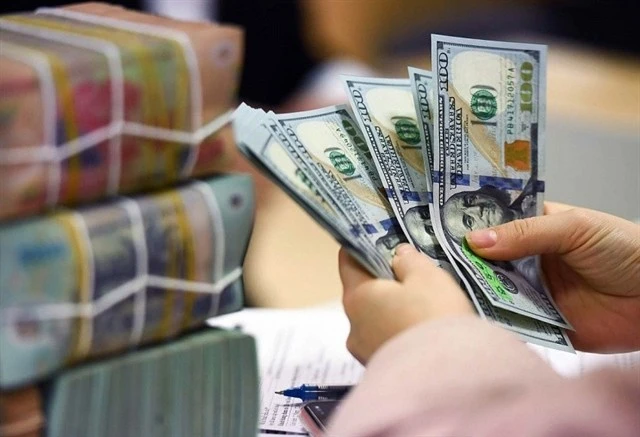
See more

VCCI, AmCham call on US to delay new reciprocal tariffs on Vietnam's exports
In their joint letter sent to the US Secretary of Commerce, VCCI and AmCham called on the Trump administration to temporarily suspend the imposition of tariffs to avoid disrupting business operations, negatively affecting current trade transactions, and disturbing the logistics chain.
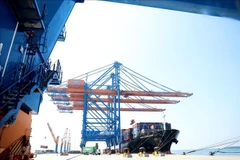
Flexible solutions needed to adapt to US new tariff policy: Official
Hoai said the US's proposed reciprocal tariff of 46% on imports from Vietnam can have significant and multifaceted impacts on the Southeast Asian country’s exports and economic growth in the near future.
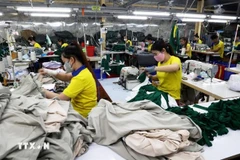
US tariffs threaten Vietnam’s exports, economic growth: Insiders
Michael Kokalari, Chief Economist at VinaCapital, described the April 2 announcement of ‘reciprocal tariffs’ as “completely unexpected”. “Based on our analysis, these tariffs will make it difficult for Vietnam to achieve its 8% GDP growth target,” he said.
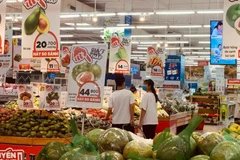
CPI rises 3.22%, inflation remains under control in Q1
The Government has implemented numerous measures to keep market prices stable and inflation under control.
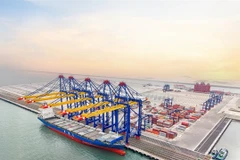
Hai Phong inaugurates 73ha-smart port
The launch of the Hateco Hai Phong International Container Terminal (HHIT) represents a significant milestone in Vietnam’s maritime development, boosting international trade and driving economic growth not only in the northern region but across the nation.
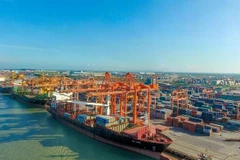
Vietnam, Canada strengthen cooperation amidst global trade tensions
Quebec leaders expressed their determination to bolster comprehensive cooperation with Vietnam as part of Canada's strategy to diversify markets and reduce its dependence on the US market.

Vietnam posts trade surplus of 3.16 billion USD in Q1
In March alone, the total trade revenue reached 75.39 billion USD, up 18.2% compared to the previous month, and 16.6% year-on-year.
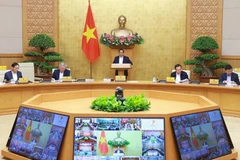
PM calls for flexible response to US tariffs, maintaining 8% growth target
Prime Minister Pham Minh Chinh emphasised that Vietnam will not change its target of achieving economic growth of 8% or higher this year, while simultaneously maintaining macroeconomic stability, ensuring social welfare, and improving people's livelihoods.
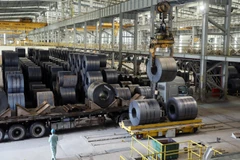
Vietnam's GDP expands by 6.93% in Q1
The agro-forestry-fishery, industry-construction, and service sectors expanded by 3.74%, 7.42% and 7.7%, contributing 6.09%, 40.17%, and 53.74% to the total GDP expansion during January–March, respectively.
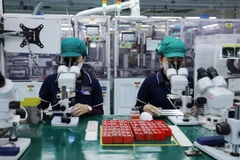
FDI inflow into Vietnam rises 34.7% in Q1
This growth is driven by several factors, including a sharp increase in additional investment to existing projects, capital contribution, and share purchases.
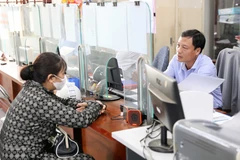
Public satisfaction with administrative services improves further: conference
The 2024 PAR Index achieved its highest average value to date – at 88.37%, up 1.39% from 2023, with all the 63 provinces and centrally-run cities scoring above 80%.

FDI predicted to flow strongly into high-value technology sectors
Vietnam is emerging as an attractive destination for investors in science and technology, especially semiconductors, largely due to high-quality human resources at competitive cost, upgraded infrastructure, increasingly open and transparent policies, and high political determination of Party and State leaders.

RCEP agreement marks three years of advancing regional trade cooperation
Currently, the agreement covers a market of approximately 2.3 billion people, representing around 30% of the global population and GDP. Notably, five of its 15 members are members of the G20.

Vietnam provides updates on rules of origin at WTO
Through Hien’s remarks, WTO members appreciated Vietnam’s proactive and responsible role in promoting cooperation among member states and enhancing transparency in meeting its notification obligations under WTO regulations.
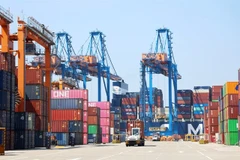
AmCham proposes US postpone reciprocal tariffs on Vietnam's goods
While AmCham acknowledges the need to address the growing trade deficit between the two nations, it strongly urges the US administration to consider implementing a grace period.
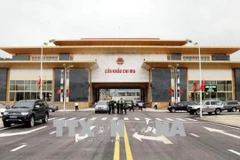
Goods flows via Lang Son’s Chi Ma border gate surge
This is reflected in the customs revenue at the border gate, which exceeded 200 billion VND (7.75 million USD), accounting for 35% of the annual budget target for 2025 and 6% higher than that of the same period in 2024.
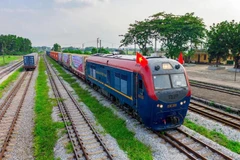
Lao Cai-Hanoi-Hai Phong railway hoped to boost Vietnam’s 2nd largest economic corridor
The railway will be newly constructed with the goal of connecting to the Hai Phong international seaport and facilitating multimodal transport with China, says Nguyen Khanh Tung, Deputy Director of the Railway Project Management Board under the Ministry of Construction.
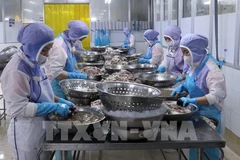
UOB Vietnam backs NAVICO in green finance push for aquaculture
The partnership builds on prior collaboration, with UOB Vietnam previously funding NAVICO’s installation of rooftop solar power systems at its aquaculture facilities.
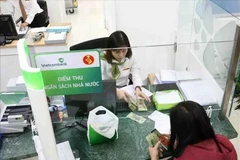
State budget revenue rises 9.7% in Q1
To meet the 2025 revenue target of 411 trillion VND, a 9.6% rise from 2024, the department has instructed regional customs offices to implement measures to boost revenue tailored to local conditions while preventing budget losses.

Vietnamese enterprises float products at world's largest startup fair in India
Startup Mahakumbh 2025 is expected to help Vietnamese firms learn startup and digital transformation initatives from India and other countries, access innovation experiences of leading global enterprises, and introduce their startup products to the world.
